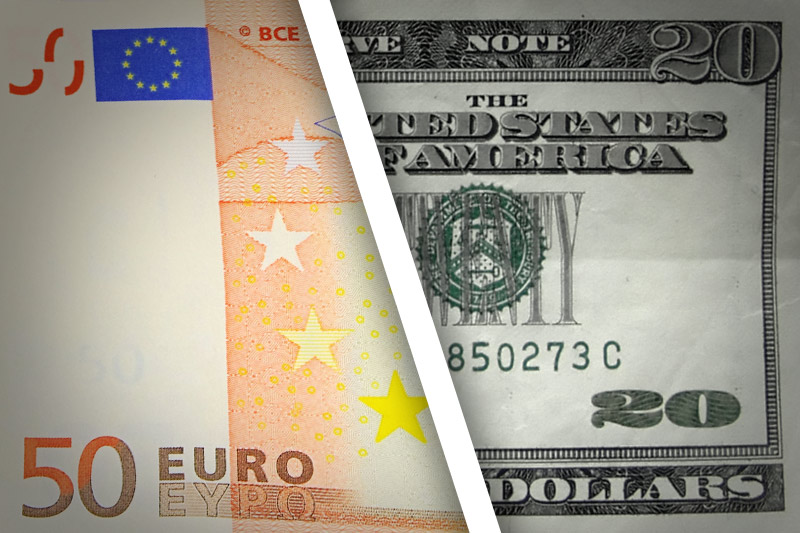Investing.com - The euro came off session highs against the U.S. dollar on Thursday, following the release of stronger-than-expected U.S. data on manufacturing and existing home sales.
EUR/USD pulled back from 1.3296, the session high, to hit 1.3244 during U.S. morning trade, up 0.12% for the day.
The pair was likely to find support at 1.3143, Monday’s low and resistance at 1.3307, Wednesday’s high and an eight-and-a-half month high.
The dollar found support after official data showed that manufacturing activity in the Philadelphia-region expanded at the fastest pace in eight months in December.
The Philly Fed manufacturing index rose to 8.1 in December from minus 10.7 in November, compared to expectations for a reading of minus 3.0.
Elsewhere, the National Association of Realtors said that existing home sales rose by 5.9% to a seasonally adjusted 5.04 million units in November. Analysts had expected U.S. existing home sales to rise 2.3% to 4.87 million units.
The euro hit session highs earlier after revised data showed that the U.S. economy expanded by an annualized 3.1% in the three months to September, up from a preliminary estimate of 2.7% and above expectations for growth of 2.8%.
In a separate report, the U.S. Department of Labor said the number of people who filed for unemployment assistance last week rose by 17,000 to 361,000, compared to expectations for an increase of 13,000 to 357,000.
Investors remained cautious as growing doubts over whether a deal to avoid the U.S. fiscal cliff will be reached ahead of the January 1 deadline fuelled concerns that automatic tax hikes and spending cuts will be triggered.
The euro was little changed against the pound and the yen, with EUR/GBP dipping 0.01% to 0.8139 and EUR/JPY inching down 0.03% to 111.59.
The yen firmed up earlier in the session after the Bank of Japan unveiled additional easing measures, following calls by incoming Prime Minister Shinzo Abe for policymakers to implement more aggressive measures to spur growth and combat deflation.
EUR/USD pulled back from 1.3296, the session high, to hit 1.3244 during U.S. morning trade, up 0.12% for the day.
The pair was likely to find support at 1.3143, Monday’s low and resistance at 1.3307, Wednesday’s high and an eight-and-a-half month high.
The dollar found support after official data showed that manufacturing activity in the Philadelphia-region expanded at the fastest pace in eight months in December.
The Philly Fed manufacturing index rose to 8.1 in December from minus 10.7 in November, compared to expectations for a reading of minus 3.0.
Elsewhere, the National Association of Realtors said that existing home sales rose by 5.9% to a seasonally adjusted 5.04 million units in November. Analysts had expected U.S. existing home sales to rise 2.3% to 4.87 million units.
The euro hit session highs earlier after revised data showed that the U.S. economy expanded by an annualized 3.1% in the three months to September, up from a preliminary estimate of 2.7% and above expectations for growth of 2.8%.
In a separate report, the U.S. Department of Labor said the number of people who filed for unemployment assistance last week rose by 17,000 to 361,000, compared to expectations for an increase of 13,000 to 357,000.
Investors remained cautious as growing doubts over whether a deal to avoid the U.S. fiscal cliff will be reached ahead of the January 1 deadline fuelled concerns that automatic tax hikes and spending cuts will be triggered.
The euro was little changed against the pound and the yen, with EUR/GBP dipping 0.01% to 0.8139 and EUR/JPY inching down 0.03% to 111.59.
The yen firmed up earlier in the session after the Bank of Japan unveiled additional easing measures, following calls by incoming Prime Minister Shinzo Abe for policymakers to implement more aggressive measures to spur growth and combat deflation.
